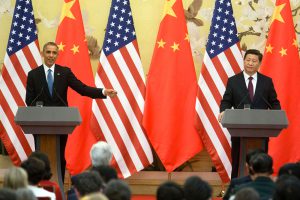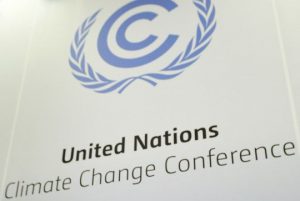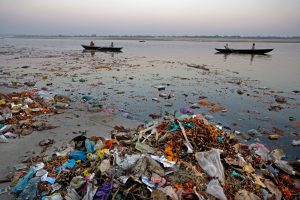As finance ministers gather in Lima for the annual meeting of the World Bank, and with only just under two months to go before the opening of the Paris climate conference, rich countries and development banks need to come forward with new finance announcements that will scale up to the promised US$100 billion.
Following further pledges and commitments made at UN Climate Week in New York late last month, it looks like the world is more than half way to meeting the US$100 billion a year from 2020 agreed at the Copenhagen climate summit in 2009. Indeed,
a joint report released in Lima yesterday by the OECD and Climate Policy Initiative reckons US$62 billion has been “mobilised” so far. But, as I shall explain below, the gap could be considerably bigger than it looks depending on how ‘private’ and ‘public’ funding is defined.
The shortfall will intensify the pressure on other developed countries and multilateral banks to plug the gap, and clarify how the finance will be raised. UN Climate Week, timed to coincide with the
UN General Assembly, witnessed several big commitments on climate finance.
French President François Hollande pledged to increase French climate finance by €2 billion (14.3 billion yuan) to deliver a total of €5 billion a year by 2020 to help developing countries shift to low-carbon economies and build resilience to the impacts of climate change.
The UK also announced it would increase its climate finance by 50%, allocating £5.8 billion (56.4 billion yuan) from its aid budget for 2016–2021. These new commitments build on Germany’s announcement in May that it would double its climate finance to €4 billion a year by 2020.
Multilateral development banks also made announcements of new funding. The Asian Development Bank committed to double its climate finance to US$6 billion annually by 2020 from US$3 billion a year at present, while the European Bank of Reconstruction and Development announced it would dedicate US$18 billion over the next five years for green financing. These commitments bring developed countries closer to meeting the US$100 billion a year by 2020.
The US$100 billion commitment was vaguely worded from the outset, and there has been much debate about what should count towards the goal. The World Resources Institute (WRI)
has explored a number of scenarios, counting different potential sources that could fall within the scope of the commitment.
If public grants and concessional loans from developed countries, and their share of multilateral development bank support, are the only sources that are counted, then reaching the US$100 billion would be very difficult. As a result, countries are examining under what circumstances it would be acceptable to count the private investment explicitly mobilised as a result of the use of public money towards the US$100 billion goal. #
For example, when France provides funding for a solar plant in Burkina Faso, the public grants and concessional loans are counted, but also the private investment that was attracted as a result of the public finance support for project. WRI has developed a framework of principles for how to account for these flows. However, even when counting mobilised private investment, additional public money is needed to meet the US$100 billion. In WRI’s ‘moderate’ scenario, an additional US$10 billion to US$14 billion is needed from developed countries, and a further US$9 billion to US$13 billion from multilateral development banks.
Developed countries have requested the Climate Policy Initiative and the OECD to assess the state of play towards meeting US$100 billion goal, and their findings will be presented to finance ministers on the sidelines of the
IMF and World Bank annual meeting this week in Lima. The World Bank is also expected to make an announcement of how it will scale up its climate finance. Ministers are also aiming to agree on a clear pathway to reach the US$100 billion goal by 2020.
Drop in the Ocean
While the US$100 billion is important for demonstrating that developed countries will support the poorest and most vulnerable countries in adapting to the impacts of climate change and transforming to low-carbon economies, it represents only a fraction of the total money needed to successfully tackle climate change. Trillions of dollars are needed annually, and all governments and businesses need to ensure their investments are shifted away from high-carbon activities and toward building a resilient, low-carbon future.
Progress on this front was seen late last month, with a new
joint statement by China and the US on climate actions, building on their historic November 2014 announcement. China said it would provide 20 billion yuan (US$3.1 billion) in South-South finance to help developing countries combat climate change, a commitment comparable to pledges by some of the largest developed countries. Furthermore, China agreed to begin moves to strictly control public investment in high carbon projects, both domestically and internationally. A move that, if implemented rigorously, will shift trillions of yuan away from sectors and activities that are incompatible with maintaining a safe climate.
Inevitability
There is still a long way to go to achieve a strong agreement in Paris. More donors – both developed countries and development banks – need to come forward with new finance announcements that will bridge the gap to US$100 billion. They should also demonstrate how they are curtailing support for high-carbon projects. By moving their money and activities away from fossil fuels, businesses and investors can show that the transformation to a low-carbon world is inevitable. These are huge tasks. Nonetheless, last month we saw meaningful progress on finance that has built confidence and should inspire others to up their game in advance of an ambitious agreement in Paris.






